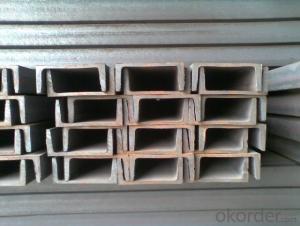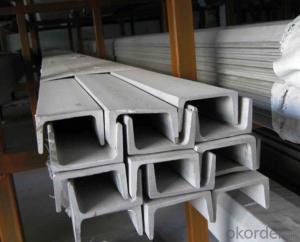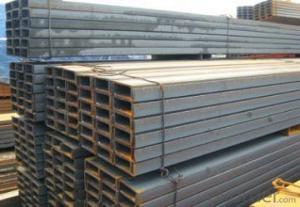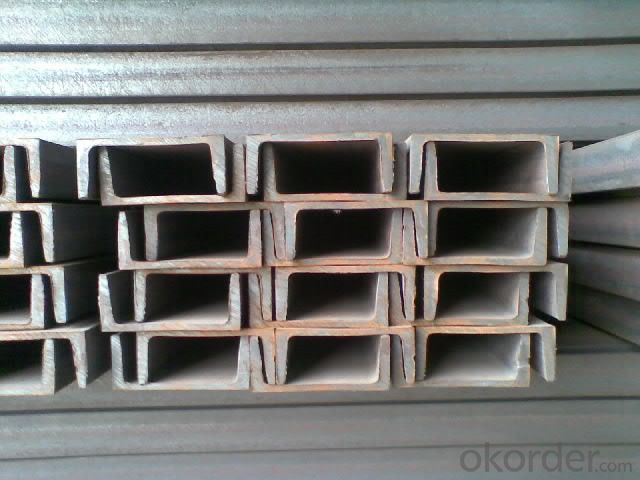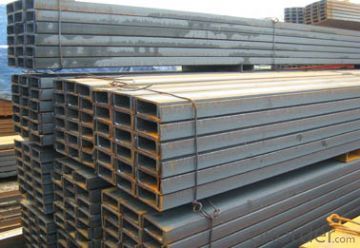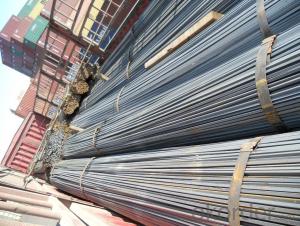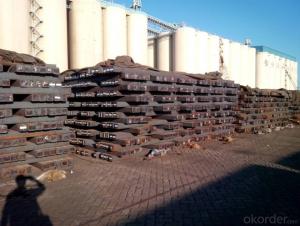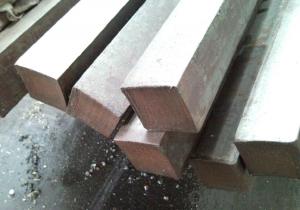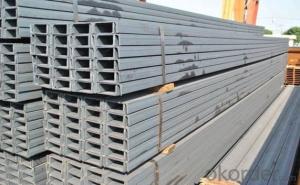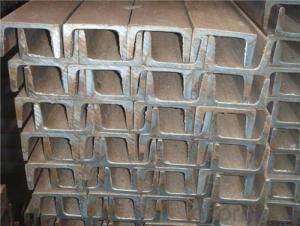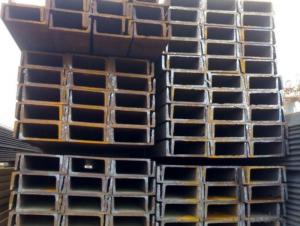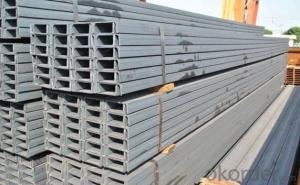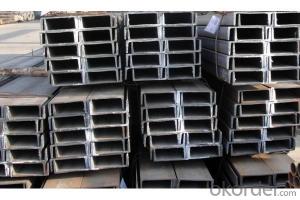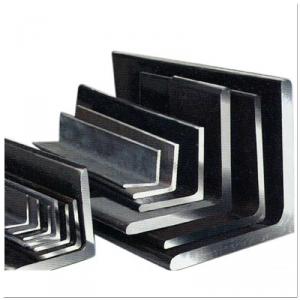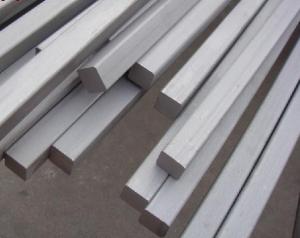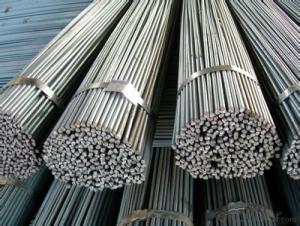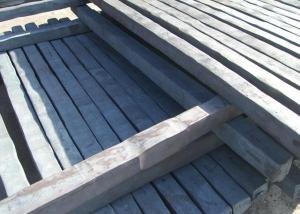180mm*70mmm U channel steel for construction
- Loading Port:
- Tianjin
- Payment Terms:
- TT or LC
- Min Order Qty:
- 25 m.t.
- Supply Capability:
- 100000 m.t./month
OKorder Service Pledge
OKorder Financial Service
You Might Also Like
Product Description:
OKorder is offering 180mm*70mmm U channel steel for construction at great prices with worldwide shipping. Our supplier is a world-class manufacturer of steel, with our products utilized the world over. OKorder annually supplies products to European, North American and Asian markets. We provide quotations within 24 hours of receiving an inquiry and guarantee competitive prices.
Product Applications:
180mm*70mmm U channel steel for construction are ideal for structural applications and are widely used in the construction of buildings and bridges, and the manufacturing, petrochemical, and transportation industries.
Product Advantages:
OKorder's U channel steel are durable, strong, and resist corrosion.
Main Product Features:
· Premium quality
· Prompt delivery & seaworthy packing (30 days after receiving deposit)
· Corrosion resistance
· Can be recycled and reused
· Mill test certification
· Professional Service
· Competitive pricing
Product Description:
We are definitely speciallizing in manufacturing and supplying channel steel as per japanese standard, which is characterised with high mechanical strength and competitive prices.
1.The JIS channel can be devided into two kinds, namely common channel steel and light channel steel. The sizes of hot rolled common channel steel range from 5# to 40#. Meanwhile, the channel steel can be divided into cold forming sectional equal channel steel, cold forming sectional unequal channel steel, cold forming inner edge channel steel and outer edge channel steel.
2.The JIS channel is usually used for arch-itechtural structure, and they could be welded in order to support or hang a vari-ety of facilities. They are also usually used in combination with I beam. The channel steel with sizes under 14# is usually applied to construction engineering, as purline, while the channel steel with sizes above 16# is more likely to be used in building vehicle chassis structure and mechanical structure. Furthermore, the channel steel in sizes above 30# are target at building bridge structure, as tension bar.
3.In a word, the channel steel must possess perfect welding property, riveting property and mechanical property and so on
1.The JIS channel will be packed in bundle with steel wire at each end of every bundle and color marking in order to help the customer to recognize his goods more easily at sight.
2. And the JIS channel could be loaded into 20ft or 40ft container, or by bulk cargo.If the weight of each bundle reaches more than 3.5 mt, the loading by break bulk cargo should be choosed.When the weight of each bundle reaches less than 3mt, the loading by container should be choosed.
3.As for the transportaion from mill to loading port, the truck will be usually used. And the maximum quantity for each truck is 40mt.
4.All in all, we could do in accordance with customer's request.
FAQ:
Q1: Why buy Materials & Equipment from OKorder.com?
A1: All products offered byOKorder.com are carefully selected from China's most reliable manufacturing enterprises. Through its ISO certifications, OKorder.com adheres to the highest standards and a commitment to supply chain safety and customer satisfaction.
Q2: How do we guarantee the quality of our products?
A2: We have established an advanced quality management system which conducts strict quality tests at every step, from raw materials to the final product. At the same time, we provide extensive follow-up service assurances as required.
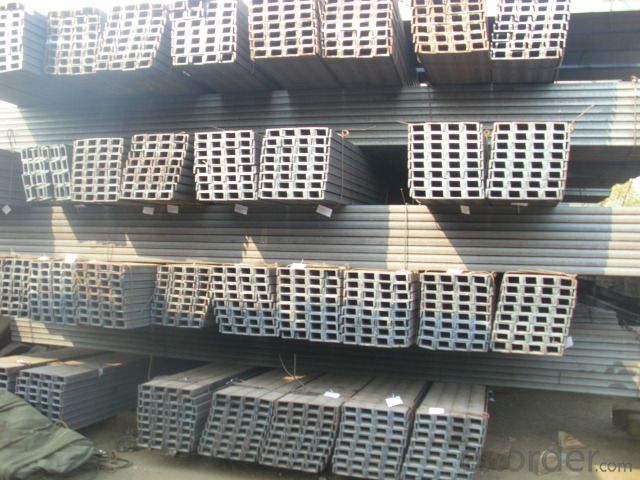
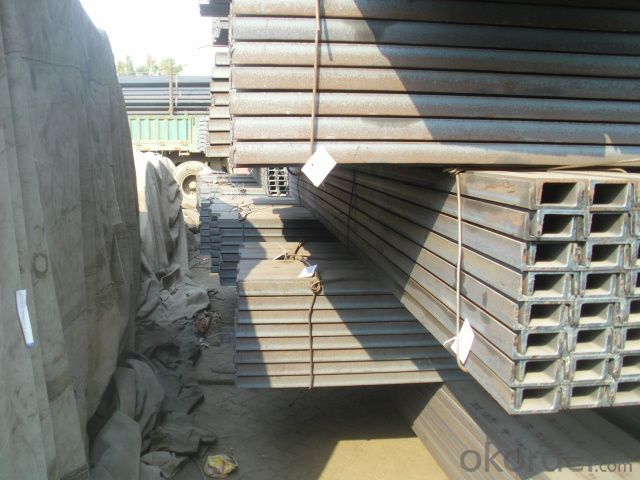
- Q: How do you use a steel square to determine the slope of a garden bed?
- To use a steel square to determine the slope of a garden bed, you can follow these steps: 1. Start by placing one edge of the steel square against the ground at the lowest point of the garden bed. 2. Ensure that the steel square is level by using a bubble level or by checking that the bubble is centered within the level. 3. Once the steel square is level, hold it steady in that position. 4. Look at the other edge of the square that is extending away from the ground. This edge represents the slope of the garden bed. 5. Observe the markings on the steel square. Most steel squares have measurements and angles marked on them. 6. Read the measurement or angle that corresponds to the line created by the edge of the square. This will give you the slope of the garden bed. 7. You can either note down the measurement or angle for future reference or use it to make necessary adjustments to the garden bed. By using a steel square, you can accurately determine the slope of a garden bed, which is crucial for proper drainage and irrigation.
- Q: Can a steel square be used for deck railing layout and installation?
- Yes, a steel square can be used for deck railing layout and installation. A steel square, also known as a framing square or carpenter's square, is a versatile tool that is commonly used in construction and woodworking for measuring and marking right angles. It has a long blade with measurements along its length and a shorter tongue perpendicular to the blade, forming an L-shape. When it comes to deck railing layout and installation, a steel square can be used to ensure accurate measurements and angles. It can help align the posts and balusters, ensuring that they are correctly positioned and evenly spaced. The measurements on the blade can be used to mark the exact locations for the railing components, while the right angle formed by the blade and tongue can be used to check for squareness and alignment. Additionally, a steel square can be used as a guide for cutting and shaping the railing components. Its straight edge can be used to draw straight lines or guide a circular saw or jigsaw for precise cuts. Furthermore, the tongue of the steel square can be used as a guide for marking and drilling holes in the railing components. Overall, a steel square is an essential tool for deck railing layout and installation. Its accuracy and versatility make it suitable for ensuring precise measurements, angles, and alignment during the construction process.
- Q: How do you use a steel square to measure the width of a window frame?
- To use a steel square to measure the width of a window frame, follow these steps: 1. Start by selecting an appropriate size steel square. The length of one side of the square should be longer than the width of the window frame you are measuring. 2. Hold the steel square against one side of the window frame, ensuring that it is flush against the edge. 3. Take a measurement by aligning the end of the square with the opposite side of the window frame. Read the measurement where the other side of the square intersects with the frame. 4. To ensure accuracy, repeat this process on the other side of the window frame and compare the two measurements. The width of the window frame is the average of these two measurements. 5. If needed, you can also measure the diagonal of the window frame by placing the steel square diagonally across the frame and repeating the above steps. This can be useful to ensure the frame is square. Remember to take note of the units used when measuring, such as inches or centimeters, to accurately communicate the width of the window frame.
- Q: Can a steel square be used for gazebo roofing?
- Indeed, gazebo roofing can indeed be achieved by utilizing a steel square. Due to their robustness and resilience, steel squares are commonly employed in the construction industry. They furnish a solid foundation for roofing materials and can endure diverse weather conditions. Nevertheless, it is crucial to guarantee the appropriate installation and fastening of the steel square to the gazebo framework in order to establish a secure and enduring roofing solution. Furthermore, it is advisable to seek advice from a professional or adhere to the manufacturer's instructions to guarantee that the steel square is suitable for the particular gazebo design and weight specifications.
- Q: Can a steel square be used for checking the squareness of a drill press quill?
- Yes, a steel square can be used for checking the squareness of a drill press quill. A steel square is a precision measuring tool with a right angle, which can be used to determine whether two surfaces or components are perpendicular to each other. By placing the steel square against the quill of a drill press and ensuring that it is flush against the quill and the base, one can visually inspect if the quill is perfectly perpendicular to the base. If the steel square meets both surfaces at a 90-degree angle, then the quill is square. However, if there is a gap or if the angle is not a perfect 90 degrees, adjustments may be needed to ensure the drill press quill is properly aligned.
- Q: Can a steel square be used for drywall taping?
- Indeed, drywall taping can be accomplished with a steel square. Although there are specialized tools like a drywall taping knife or a trowel made explicitly for this purpose, a steel square can still prove effective in certain scenarios. Utilizing a steel square enables the measurement and marking of straight lines, a crucial aspect when cutting drywall sheets or indicating the positioning of joint tape. Furthermore, it can serve as a straight edge to ensure the application of joint compound or the smoothing out of the tape results in clean and straight lines. Nonetheless, it is worth mentioning that a steel square might not possess the same versatility or efficiency as tools specifically designed for drywall taping, making it potentially less suitable for professional drywallers or large-scale projects.
- Q: What are some common uses for a steel square in box joint construction?
- The steel square, a tool that is absolutely necessary for box joint construction, serves various purposes. Some common applications of the steel square in box joint construction are: 1. Marking and measuring: To precisely mark and measure the dimensions of the box joint, the steel square is employed. It aids in determining the appropriate size and spacing of the finger joints, guaranteeing accuracy in the layout. 2. Verifying squareness: In order to ensure that the corners of the box joint are perfectly perpendicular, the steel square is utilized. This verification guarantees that the joints are solid and robust. 3. Aligning and guiding: During the assembly of the box joint, the steel square can be used to align and guide the pieces together. It helps to maintain the correct angle and ensures that the joints fit tightly, resulting in a secure box. 4. Testing for flatness: Using the steel square, the flatness of the joint surfaces can be tested. By placing the square against the surfaces, any gaps or irregularities can be identified and corrected prior to final assembly. 5. Cutting and sawing: The steel square can serve as a guide for cutting and sawing the box joint. It provides a straight edge for the saw or router, ensuring precise and clean cuts along the joint lines. All in all, the steel square plays an indispensable role in box joint construction. It aids in layout, alignment, squareness verification, and precise cuts, leading to a well-fitted and sturdy box joint.
- Q: How do you use a steel square to lay out a jack rafter?
- To use a steel square to lay out a jack rafter, you will need to follow a few steps. First, ensure that you have a proper understanding of the different markings and measurements on the steel square. The steel square typically consists of two arms, the longer one called the body and the shorter one called the tongue. These arms have various markings and notches that are essential for accurate layout. 1. Determine the pitch: The pitch is the slope or angle of the roof. Use the pitch scale on the steel square and align it with the desired pitch. This will help you determine the angle at which the jack rafter needs to be cut. 2. Find the length: Measure the horizontal distance from the ridge board to the wall plate where the jack rafter will be installed. Place the steel square on the edge of the rafter stock, ensuring the body aligns with the plumb (vertical) edge and the tongue aligns with the horizontal edge. The intersection of the tongue and a suitable number on the body will give you the length of the rafter. 3. Mark the plumb cut: With the determined length, use the square to mark the plumb cut at the end of the rafter. This cut will be perpendicular to the ridge board and should align with the layout line on the ridge board. 4. Mark the seat cut: The seat cut is where the rafter will rest on the wall plate. To mark it, place the square on the edge of the rafter stock with the tongue aligned with the plumb cut mark. Slide the square towards the body until it aligns with the desired pitch on the pitch scale. This will give you the angle for the seat cut. 5. Mark the bird's mouth: The bird's mouth is the notch that will allow the rafter to sit securely on the wall plate. Place the square on the lower end of the rafter, ensuring the body aligns with the plumb edge. Slide the square until the tongue aligns with the seat cut angle. Mark the notch where the tongue meets the rafter. 6. Cut and install: Use a saw to cut along the marked lines for the plumb cut, seat cut, and bird's mouth. Once cut, place the jack rafter in position, ensuring the bird's mouth fits snugly onto the wall plate. Secure the rafter by nailing it to the wall plate and the ridge board. By following these steps and accurately utilizing the markings on a steel square, you can effectively lay out and cut a jack rafter for your roofing project.
- Q: What are some common projects that require the use of a steel square?
- A framing square, which is also referred to as a steel square, is a tool widely used in construction and woodworking projects due to its versatility. It is commonly utilized in various tasks such as: 1. Framing: Building walls, roofs, and floors necessitates the use of steel squares in order to accurately establish angles and measurements for cuts. This ensures the structural integrity of the framing. 2. Staircases: Precise measurements and angles are crucial when constructing stairs. Steel squares are employed to mark and cut the diagonal supports, known as stringers, ensuring their accurate positioning and alignment. 3. Roofing: Steel squares are used in roof installation or repair to determine the pitch or slope of the roof. This aids in cutting rafters and trusses at the correct angle for a proper fit and effective drainage. 4. Cabinetry: Steel squares are excellent for measuring and marking angles when constructing cabinets. They ensure that the corners are square, the cabinet doors are straight, and the shelves are level. 5. Decking: Accurate marking and cutting of posts, joists, and beams are essential when constructing a deck. Steel squares assist in ensuring that the deck is level and properly aligned. 6. Furniture making: In woodworking projects like building tables, chairs, or other furniture pieces, steel squares are utilized to mark and cut precise angles for joinery. This guarantees a tight and secure fit between the different components. 7. Shelving: Steel squares are valuable for marking and cutting supports and brackets for shelving units. They ensure that the shelves are level and properly aligned to distribute weight evenly. 8. Door and window installation: Steel squares aid in marking and confirming the squareness and proper alignment of door or window openings. This ensures precise installation and prevents potential issues with opening and closing. 9. Tile layout: Steel squares can be used to ensure straight lines and right angles when installing tiles. They assist in creating accurate reference lines and ensuring correct tile positioning. In summary, a steel square is an indispensable tool in construction and woodworking projects that demand precise measurements, angles, and squareness. Its versatility makes it essential for both professional builders and DIY enthusiasts.
- Q: What are the markings on a steel square?
- A combination of numbers, lines, and symbols is typically used on a steel square to indicate measurements and angles. The steel square commonly features a ruler scale along its edges, which enables precise measurements of length and width. These ruler scales are usually marked in both inches and centimeters, providing flexibility in measurement systems. Moreover, the face of the steel square includes markings that indicate angles. This consists of a circular protractor scale, allowing for the measurement of angles ranging from 0 to 180 degrees. The protractor scale proves beneficial in carpentry, metalworking, and other trades when drawing or measuring angles. Additionally, steel squares often possess markings that facilitate accurate cuts or angles. These markings may include lines denoting commonly used angles like 45 degrees or 90 degrees, as well as indicators for marking out typical rafter lengths or stair stringer layouts. In conclusion, the purpose of the markings on a steel square is to assist in precise measurements, angles, and cuts across a variety of trades.
Send your message to us
180mm*70mmm U channel steel for construction
- Loading Port:
- Tianjin
- Payment Terms:
- TT or LC
- Min Order Qty:
- 25 m.t.
- Supply Capability:
- 100000 m.t./month
OKorder Service Pledge
OKorder Financial Service
Similar products
Hot products
Hot Searches
Related keywords
